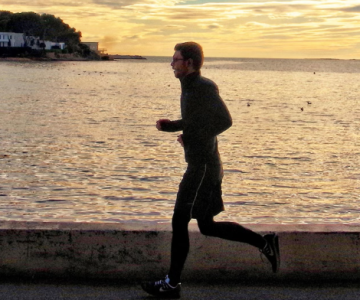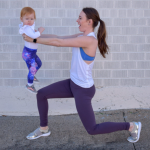Whether you’re new to running or a seasoned pro, there are certain questions that tend to pop up time and again. Should I stretch before running? Does ice really help with recovery? Do I need orthotics? These questions—and many more—are frequently asked by runners of all experience levels. Let’s take a closer look at some of these common running myths and set the record straight once and for all.
Should I Stretch?
The debate over stretching before running can be confusing. Some sources say you must stretch, while others suggest you skip it altogether. So, what’s the truth?
Dynamic stretching, not static stretching, should be your go-to before running. Research shows that static stretching can negatively affect your performance by reducing strength, power, and running economy. It can even increase the energy cost of running. On the other hand, dynamic stretching has been found to decrease the risk of injury and can actually help improve your performance by increasing caloric expenditure.
That doesn’t mean static stretching is bad. In fact, static stretching can be useful for improving muscle length and rehabilitation after an injury. If you’re used to stretching, you shouldn’t stop altogether. Just make sure you’re doing it at the right time—post-run, not before.
Does Ice Really Help?
We’ve all been told to “ice it” after an injury, but does it really work?
The body’s inflammatory response to exercise is a natural part of the healing process. However, sometimes the body overcompensates, leading to excessive inflammation. Applying ice can help by reducing blood flow to the injured area, which slows down cellular metabolism and limits inflammation. It can also help boost levels of norepinephrine, a neurotransmitter that contributes to anti-inflammatory effects.
Research shows that cold therapy, such as ice baths or cryotherapy, can alleviate delayed-onset muscle soreness (DOMS) and reduce perceived exertion after a hard run or race. While ice won’t immediately impact muscle lactate levels, it can help with muscle recovery up to 96 hours post-exercise.
So, go ahead and use ice after tough workouts—it will likely reduce soreness and improve recovery time.
Do I Need Orthotics?
Orthotics are a common solution for many runners, but do you really need them?
Orthotics, whether custom-made or over-the-counter, are helpful in certain situations. For example, they can provide relief during injury recovery or help redistribute load along the kinetic chain. However, not every runner requires orthotics. In some cases, strengthening the hips, legs, and feet can eliminate the need for them.
If you’re using orthotics to manage overpronation, you may find that with proper strength training, you no longer need them. It’s important to remember that orthotics are not a permanent fix but rather a temporary solution. If you find that they’re not improving your symptoms, it may be time to reconsider their use.
When it comes to custom vs. over-the-counter orthotics, there’s no strong evidence suggesting one is superior. Custom orthotics can be pricey, and in many cases, over-the-counter versions are just as effective. Be sure to consult with a professional who understands your movement patterns before making a decision.
What Kind of Shoe Is Best for Me?
The best shoe for you is the one that feels comfortable. Forget about the latest trend or what others recommend—comfort should be your main priority.
Research supports the idea that selecting shoes based on personal comfort reduces the risk of injury. Shoes do not prevent injuries on their own, but wearing an uncomfortable shoe can increase your injury risk. The heel-to-toe drop (the difference in height between the heel and toe of the shoe) is another popular topic. While it’s important not to make drastic changes in heel drop, research shows that moving from a 12 mm drop to an 8 mm drop is generally safe. But overall, comfort should be your main guiding factor when selecting shoes.
When Should I Foam Roll?
Unlike static stretching, foam rolling can be done at any time. This technique helps relieve muscle tightness and fascia restrictions that build up during running. Research shows that foam rolling can reduce muscle soreness, improve range of motion, and even enhance performance.
Foam rolling is most effective when used after running or on rest days as part of your recovery routine. While it may not always be comfortable, it should not be painful. Spend 20-30 seconds on each area of discomfort, rolling slowly and deliberately. Focus on one area at a time, and make sure you’re using the right type of foam roller. A smooth, medium to high-density roller works best for most runners.
Do I Really Need Strength Exercises?
The short answer is yes—strength training is crucial for runners.
Many runners believe they don’t need to focus on strength because they’re already running regularly. However, when I assess their strength, I often find weak or inefficient muscles. Building strength and improving coordination are key to running efficiently and preventing injury. Stronger muscles allow you to generate more force, which is essential for speed and endurance.
Start with basic core strengthening exercises, focusing on proper breathing and muscle engagement. Over time, add running-specific movements like lunges, squats, and plyometrics to further build strength and power. Strength training helps prevent injuries by improving your posture, stability, and running mechanics.
Final Thoughts
The world of running is full of myths and misconceptions, but by focusing on the right information, you can improve your performance and reduce your risk of injury. From dynamic stretching to strength training, adopting a well-rounded approach to your running routine will help you stay injury-free and enjoy the sport for years to come.





